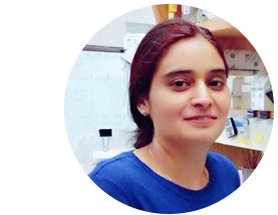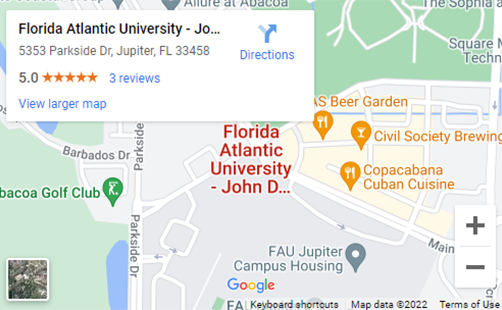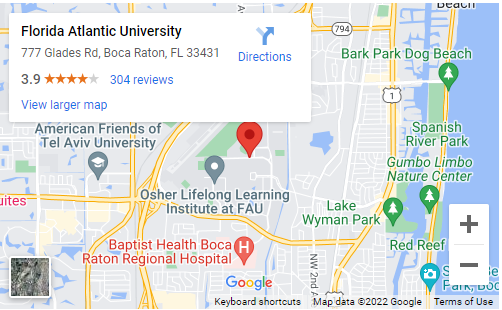Dr. Lucia Carvelli, Ph.D.
In our lab we study the mechanism of action of drugs of abuse such as amphetamine and cocaine. Specifically, we investigate how these drugs alter the chemical and electrical transmission at the dopaminergic synapses. We focus our studies on the dopaminergic neurons because they are among the main types of neurons that form the reward system. Moreover, dopamine which is synthetized and stored in the dopaminergic neurons, is the major neurotransmitter released in the brain when animals are treated or self-administer drugs of abuse.
We use different model systems including neuronal cultures, heterologous expression systems and C. elegans, and a variety of techniques of molecular biology, biochemistry, pharmacology, electrophysiology, imaging, genetics and epigenetics.
Currently, we are focusing our studies on an NIH-funded project in which we investigate the epigenetic and molecular mechanisms underlying the long-term and transgenerational effects of amphetamine and cocaine.
Read below about our different sub areas of the lab research:
Despite its therapeutic importance and dangers as a recreational drug, the mechanism of action of amphetamine is still poorly understood. In vitro and in vivo studies have demonstrated that amphetamine competes for reuptake of DA and promotes reverse transport of DA through the transporter into the synapse. However, in mice lacking the DA transporter as well as the ability to synthesize DA, amphetamine still produces behavioral effects. These data suggest that mechanisms involving targets and molecules other than the DA transporter and DA itself are responsible for some of the effects generated by amphetamine. Thus, in my laboratory we searched for alternative amphetamine targets. Since the major proteins involved in dopaminergic transmission are highly conserved from worm to man, we used C. elegans as a model system to exploit the genetic tools this system offers. We found that amphetamine, besides the DA transporter, also engages the newly identified chloride channels LGC-55 to generate locomotor effects (Safratowich et al. 2013; JBC). This conclusion was supported by our behavioral data showing that whereas the single dat-1 or lgc-55 knockout animals respond to amphetamine albeit to lesser degree, the dat-1;lgc-55 double knockout animals do not respond at all to amphetamine treatments. By performing two electrodes voltage-clamped experiments in Xenopus oocytes expressing the LGC-55 channels, we demonstrated that amphetamine directly activates these channels and generates chloride-dependent currents.
Our data reveal that amphetamine activation of LGC-55 channels is within the same range of concentrations relevant in drug addiction but are orders of magnitude higher than what would be expected in an ADHD patient taking therapeutic amphetamine (5-10 µM). Indeed, amphetamine Km for LGC-55, as measured in Xenopus oocytes, is 152 µM and is consistent with the concentrations of amphetamine found in the brain of tolerant addicts (hundreds µM). Thus, if LGC-55 homologues exist in humans, our data may have an impact in the process of designing new therapies to treat addiction to amphetamine. Interestingly, a preliminary screen through the human protein data base has revealed the existence of 4 orphan proteins sharing 30-45% identity with the LGC-55 at the amino acid level. Whether these receptors are activated by amphetamine needs to be established by future studies. If one or more of these receptors are found to be activated by amphetamine, they could provide a novel therapeutic target with great promise, given the many links between aminergic signaling, mental disorder and addiction.
Phenylethylamines constitute a large class of both biogenic and synthetic compounds. Among the synthetic subgroup, amphetamine and methamphetamine are well-known for their stimulant effects. The biogenic subgroup is comprised of well-characterized neurotransmitters like dopamine, norepinephrine and serotonin, and neurotransmitters broadly named trace amines. Among the trace amine group, β-phenylethylamine (βPEA) exhibits the highest degree of chemical and structural similarities with amphetamine. In the mammalian brain, βPEA is heterogeneously distributed, with the highest levels found in the nigrostriatal and mesolimbic regions. These same areas are vastly innervated by dopaminergic neurons and are major sites of action of amphetamine. βPEA is thought to enhance dopaminergic transmission, yet its specific mechanism of action remains unclear. We are investigating whether and how βPEA affects the dopaminergic synapses. We have already demonstrated that βPEA, similarly to amphetamine, causes DA efflux through the DA transporter and activates the LGC-55 channels more efficiently than amphetamine (Safratowich et al. 2014; J Neurosci). We also found that βPEA generates stronger behavioral effects than amphetamine in C. elegans. Our in vitro and in vivo data are supported by cell specific rescue experiments which showed that, while lgc-55 knockouts do not exhibit βPEA-induced behaviors, re-expression of lgc-55cDNA in 17 classes of neurons fully restores the βPEA-induced behaviors in lgc-55 knockout animals.
The LGC-55 channels are members of the cys-loop ligand-gated ion channel (LGIC) receptors superfamily, which includes the well-studied mammalian nicotinic acetylcholine, 5HT3, glycine and GABA (type A and C) receptors. Previous data have shown that the activation of the LGIC is not simply a direct consequence of substrate binding, but rather is a multistep process where binding of the ligand induces conformation changes into the so called "flip state" from which the channel shifts into its open configuration. Full and partial agonists enable receptors to transition from the inactivated to the activated state with different efficiencies, where full agonists exhibiting a more efficient transition into the flip state. Our data show that βPEA activates the LGC-55 channels more efficiently and generates larger currents than those generated by amphetamine, suggesting that βPEA and amphetamine act as full and partial agonists for LGC-55, respectively. This phenomenon has been reported for GABAA and glycine receptors which can be potentiated by neurosteroids, benzodiazepines, anesthetics and ethanol. Similarly, our data suggest that amphetamine amplifies the transient behavioral effects induced by βPEA by potentiating the activity of the LGC-55. Considering that low amphetamine concentrations are used to treat ADHD, our observation that 1 µM amphetamine potentiates the effect of βPEA on LGC-55 channels might have important physiologic implications, if LGC-55 homologues are present in humans. The existence of amine-gated channels in mammals has long been suggested, and the fact that the human protein database shows four orphan proteins sharing 30-45% identity with LGC-55 suggest that LGC-55 homologues might indeed exist in humans. We are currently trying to clone the mammalian genes that encode for these orphan proteins.
A more recent aspect of my research explores the epigenetic changes generated by amphetamine and the effect these changes have on gene expression, protein function and behaviors (McCowan et al. 2015; J Addiction Prevention). As previously mentioned, amphetamine is a psychostimulant and the most prescribed drug to treat ADHD. Although therapeutically used doses are generally well tolerated, amphetamine is liable to be abused by users looking for increased alertness, weight loss or athletic performance. Genome-wide analyses such as microarrays and RNA-sequencing following acute or chronic exposure to drugs of abuse have demonstrated striking changes in expression of genes that affect key regions of the brain involved in reward. These studies have suggested that the ability of drugs of abuse to alter gene expression is an important step in the initiation, maintenance and relapse to addictive behaviors. However, only a small number of studies have explored changes in gene expression caused by amphetamine, and no study has investigated the long-term effects that chronic amphetamine exposure produces. This is an important issue since both as therapeutic drug or abused psychostimulant, amphetamine is used for long periods. Thus, we asked the questions: does amphetamine cause functional/behavioral alterations in adults that were treated with amphetamine during childhood to alleviate ADHD symptoms? Does chronic amphetamine exposure cause inherited functional/behavioral changes in progeny?
My laboratory has generated data showing that amphetamine exposure of C. elegans embryos (F0 generation) causes indeed epigenetic and behavioral alterations in adult animals (manuscript in preparation). Interestingly, these alterations are transmitted to the progeny (F1-F5 generations). These data are exciting and represent the first evidence that amphetamine causes trans-generational effects. Moreover, these data offer an experimental explanation to previous social studies suggesting that addiction has an inheritable component. In fact, studies on adopted twins whose biological parents had history of addiction exhibit higher changes to become adults with addiction problems even though raised in "drug-free" environments. Our studies and results have generated high enthusiasm in the field and this project is currently funded by a NIH R01 grant.
One aspect of my research is to understand the modalities of interaction between the dopamine transporter and syntaxin 1A. The dopamine transporter (DAT) is a cell membrane protein whose main function is to reuptake the dopamine released in the synaptic cleft back into the dopaminergic neurons. Previous studies suggested that the activity of DAT is regulated by allosteric proteins such as syntaxin1A (Carvelli et al. 2008 PNAS) and is altered by drugs of abuse such as amphetamine (Carvelli et al. 2010 Mol Pharmacol). Because C. elegans expresses both DAT (DAT-1) and syntaxin-1A (UNC-64), we used this model system to investigate the functional and behavioral effects caused by lack of expression of unc-64 in cultured dopaminergic neurons and in living animals. In collaboration with Dr. Elia Di Schiavi, we were able to knockdown unc-64 specifically in the dopaminergic neurons by using an inheritable RNA silencing technique. This approach leads to efficient, heritable and cell autonomous knock-downs of gene function, even in neurons usually refractory to classic RNA interference. This cell-specific knockdown method avoids the pleiotropic phenotypes caused by knockout mutations of unc-64 and ensures the transmission of dopaminergic specific unc-64 silencing to the progeny. Our data suggest that syntaxin-1A plays an important role in both functional and behavioral effects caused by amphetamine. This work was founded by an NIH R21 grant.

Dr. Lucia Carvelli
Associate Professor of Neuroscience
PhD, Pharmacology, The Mario Negri Institute for Pharmacological Research
BS, University of Calabria
Our lab seeks to understand the role of the dopaminergic system in addiction and pathological disorders such as ADHD and Parkinson's disease. Chronic exposure to drugs of abuse causes several cellular and behavioral adaptations such as tolerance, sensitization and as well as long-term effects that can be transmitted to the offspring via epigenetic mechanisms. Our main goal is to understand the mechanism of action of drugs of abuse that ultimately generate addiction.
Currently I am teaching Science of Addiction. This is a course designed as an advanced course for undergraduate students and graduate students. Using addiction as a theme, we cover basic principles of pharmacology, pharmacokinetics, biochemistry, electrophysiology and genetics. Moreover, we discuss the psychological/social aspects of addiction.
In the spirit of "mens sana in corpore sano", Latin for "a healthy mind in a healthy body", I like to exercise and cook.

Dr. Supender Kaur
Amphetamine is a psychostimulant that acts on the dopaminergic system and increases dopamine release. Chronic exposure to this drug is reported to induce epigenetic changes, but the mechanisms underlying this phenomenon are unknown. My project is focused on understanding the effects of amphetamine exposure and decoding the mechanisms responsible for epigenetic changes. Because of these heritable changes, the alterations in transcriptomic levels will help to work out the pathway amphetamine uses to induce long-term effects. C. elegans is mostly used for these studies because of several conserved pathways across species. Moreover, the simplicity of the nervous system, particularly the dopaminergic system which is the main target of amphetamine, makes it a suitable model for this study.

Dr. Tao Ke
I joined the Carvelli lab following my postdoctoral research on dopaminergic neurotoxicity of methylmercury in Dr. Michael Aschner lab at Albert Einstein College of Medicine. In the Carvelli lab, I am studying the effects caused by long-term exposure to the psychostimulants, such as amphetamine. I use C. elegans model and in vitro cell cultures to identify the epigenetic mechanisms implicated in the long-term effects caused by amphetamine in the dopaminergic neurons.
-
Prolonged Amphetamine Exposures Increase the Endogenous Human Dopamine Receptors 2 at the Cellular Membrane in Cells Lacking the Dopamine Transporter.
Nawaratne V, et al. Among authors: carvelli l. Front Cell Neurosci. 2021. PMID: 34512264 -
Prolonged Amphetamine Treatments Cause Long-Term Decrease of Dopamine Uptake in Cultured Cells.
Ferdous N, et al. Among authors: carvelli l. Neurochem Res. 2020. PMID: 31883055 -
Caenorhabditis elegans as an in vivo Model to Assess Amphetamine Tolerance.
Torres Valladares D, et al. Among authors: carvelli l. Brain Behav Evol. 2020. PMID: 33831863 -
Swimming Induced Paralysis to Assess Dopamine Signaling in Caenorhabditis elegans.
Kudumala S, et al. Among authors: carvelli l. J Vis Exp. 2019. PMID: 31009010 -
Silencing of Syntaxin 1A in the Dopaminergic Neurons Decreases the Activity of the Dopamine Transporter and Prevents Amphetamine-Induced Behaviors in C. elegans.
Lanzo A, Safratowich BD, Kudumala SR, Gallotta I, Zampi G, Di Schiavi E, Carvelli L.
Front Physiol. 2018 May 22;9:576. doi: 10.3389/fphys.2018.00576. eCollection 2018. -
Glial Expression of the Caenorhabditis elegans Gene swip-10 Supports Glutamate Dependent Control of Extrasynaptic Dopamine Signaling.
Hardaway JA, Sturgeon SM, Snarrenberg CL, Li Z, Xu XZ, Bermingham DP, Odiase P, Spencer WC, Miller DM 3rd, Carvelli L., Hardie SL, Blakely RD.
J Neurosci. 2015 Jun 24;35(25):9409-23. doi: 10.1523/JNEUROSCI.0800-15.2015. -
The Epigenetic Mechanisms of Amphetamine.
McCowan TJ, Dhasarathy A, carvelli l.
J Addict Prev. 2015;2015(Suppl 1). doi: 10.13188/2330-2178.S100001. Epub 2015 Feb 9. -
Amphetamine activates/potentiates a ligand-gated ion channel.
carvelli l.
Channels (Austin). 2014;8(4):294-5. -
Amphetamine potentiates the effects of β-phenylethylamine through activation of an amine-gated chloride channel.
Safratowich BD, Hossain M, Bianchi L, carvelli l.
J Neurosci. 2014 Mar 26;34(13):4686-91. doi: 10.1523/JNEUROSCI.3100-13.2014. -
β-Phenylethylamine requires the dopamine transporter to increase extracellular dopamine in Caenorhabditis elegans dopaminergic neurons.
Hossain M, Wickramasekara RN, carvelli l.
Neurochem Int. 2014 Jul;73:27-31. doi: 10.1016/j.neuint.2013.10.010. Epub 2013 Oct 23. -
Amphetamine activates an amine-gated chloride channel to generate behavioral effects in Caenorhabditis elegans.
Safratowich BD, Lor C, Bianchi L, carvelli l.
J Biol Chem. 2013 Jul 26;288(30):21630-7. doi: 10.1074/jbc.M113.484139. Epub 2013 Jun 17. -
SLC6 transporters: structure, function, regulation, disease association and therapeutics.
Pramod AB, Foster J, carvelli l., Henry LK.
Mol Aspects Med. 2013 Apr-Jun;34(2-3):197-219. doi: 10.1016/j.mam.2012.07.002. -
Molecular mechanisms of amphetamine actions in Caenorhabditis elegans.
carvelli l., Matthies DS, Galli A.
Mol Pharmacol. 2010 Jul;78(1):151-6. doi: 10.1124/mol.109.062703. Epub 2010 Apr 21. -
Dopamine transporter/syntaxin 1A interactions regulate transporter channel activity and dopaminergic synaptic transmission.
carvelli l., Blakely RD, DeFelice LJ.
Proc Natl Acad Sci U S A. 2008 Sep 16;105(37):14192-7. doi: 10.1073/pnas.0802214105. Epub 2008 Sep 3. -
Vigorous motor activity in Caenorhabditis elegans requires efficient clearance of dopamine mediated by synaptic localization of the dopamine transporter DAT-1.
McDonald PW, Hardie SL, Jessen TN, carvelli l., Matthies DS, Blakely RD.
J Neurosci. 2007 Dec 19;27(51):14216-27. -
Optimized synthesis of AMPA receptor antagonist ZK 187638 and neurobehavioral activity in a mouse model of neuronal ceroid lipofuscinosis.
Elger B, Schneider M, Winter E, carvelli l., Bonomi M, Fracasso C, Guiso G, Colovic M, Caccia S, Mennini T.
ChemMedChem. 2006 Oct;1(10):1142-8. -
A genetic screen in Caenorhabditis elegans for dopamine neuron insensitivity to 6-hydroxydopamine identifies dopamine transporter mutants impacting transporter biosynthesis and trafficking.
Nass R, Hahn MK, Jessen T, McDonald PW, carvelli l., Blakely RD.
J Neurochem. 2005 Aug;94(3):774-85. Epub 2005 Jun 30. -
Dopamine transporters depolarize neurons by a channel mechanism.
carvelli l., McDonald PW, Blakely RD, DeFelice LJ.
Proc Natl Acad Sci U S A. 2004 Nov 9;101(45):16046-51. Epub 2004 Nov 1. -
Glial activation and TNFR-I upregulation precedes motor dysfunction in the spinal cord of mnd mice.
Mennini T, Bigini P, Cagnotto A, carvelli l., Di Nunno P, Fumagalli E, Tortarolo M, Buurman WA, Ghezzi P, Bendotti C.
Cytokine. 2004 Feb 7;25(3):127-35. -
PI 3-kinase regulation of dopamine uptake.
carvelli l., Morón JA, Kahlig KM, Ferrer JV, Sen N, Lechleiter JD, Leeb-Lundberg LM, Merrill G, Lafer EM, Ballou LM, Shippenberg TS, Javitch JA, Lin RZ, Galli A.
J Neurochem. 2002 May;81(4):859-69. -
Transgenic SOD1 G93A mice develop reduced GLT-1 in spinal cord without alterations in cerebrospinal fluid glutamate levels.
Bendotti C, Tortarolo M, Suchak SK, Calvaresi N, carvelli l., Bastone A, Rizzi M, Rattray M, Mennini T.
J Neurochem. 2001 Nov;79(4):737-46. -
Increased peripheral benzodiazepine binding sites and pentraxin 3 expression in the spinal cord during EAE: relation to inflammatory cytokines and modulation by dexamethasone and rolipram.
Agnello D, carvelli l., Muzio V, Villa P, Bottazzi B, Polentarutti N, Mennini T, Mantovani A, Ghezzi P.
J Neuroimmunol. 2000 Sep 22;109(2):105-11. -
Amphetamine-induced loss of human dopamine transporter activity: an internalization-dependent and cocaine-sensitive mechanism.
Saunders C, Ferrer JV, Shi L, Chen J, Merrill G, Lamb ME, Leeb-Lundberg LM, carvelli l., Javitch JA, Galli A.
Proc Natl Acad Sci U S A. 2000 Jun 6;97(12):6850-5. -
Biochemical and pharmacological evidence of a functional role of AMPA receptors in motor neuron dysfunction in mnd mice.
Mennini T, Cagnotto A, carvelli l., Comoletti D, Manzoni C, Muzio V, Rizzi M, Vezzani A.
Eur J Neurosci. 1999 May;11(5):1705-10.
Lucia Carvelli| Stiles-Nicholson Brain Institute| 5353 Parkside Drive, RF 104| Jupiter, FL33458| 561.799.8115| lcarvelli@fau.edu


